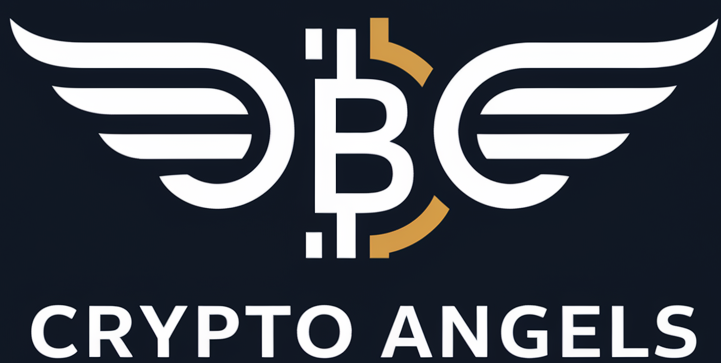Understanding MetaMask and Its Security Features
MetaMask is a popular browser extension that serves as a cryptocurrency wallet, allowing users to securely store, manage, and interact with their digital assets on the Ethereum blockchain. As the use of decentralized applications (dApps) and the adoption of cryptocurrencies continue to grow, it is crucial to understand the security features and potential risks associated with MetaMask to ensure the safety of your crypto assets.
In this comprehensive guide, we will delve into the key aspects of MetaMask’s security, explore best practices for protecting your wallet, and discuss additional tools that can enhance your overall security when using this powerful browser extension.
What is MetaMask?
MetaMask is a browser extension that acts as a bridge between your web browser and the Ethereum blockchain. It allows users to store and manage their Ethereum-based tokens, such as Ether (ETH) and ERC-20 tokens, directly from their browser. With MetaMask, users can seamlessly interact with decentralized applications (dApps) built on the Ethereum network, making it a convenient tool for accessing the growing ecosystem of decentralized finance (DeFi) platforms and other blockchain-based services.
One of the primary advantages of MetaMask is its ease of use. By installing the extension on popular browsers like Google Chrome, Mozilla Firefox, or Brave, users can quickly set up a wallet and start interacting with dApps without the need for complex software or technical expertise. MetaMask provides a user-friendly interface that simplifies the process of sending and receiving tokens, as well as signing transactions and interacting with smart contracts.
Key Security Features of MetaMask
MetaMask prioritizes user security and incorporates several key features to protect users’ crypto assets. One of the essential security measures is two-factor authentication (2FA). By enabling 2FA, users add an extra layer of protection to their wallet, requiring a second form of verification, such as a code from an authenticator app, in addition to their password. This significantly reduces the risk of unauthorized access to your wallet, even if your password is compromised.
Another important security feature in MetaMask is network confirmation prompts. When interacting with dApps or initiating transactions, MetaMask displays a confirmation prompt, allowing users to review and verify the details of the transaction, including the recipient address, the amount of tokens being sent, and the estimated gas fees. This helps prevent accidental or malicious transactions and gives users control over their actions on the blockchain.
MetaMask also provides a transaction history within the wallet interface, enabling users to track and review their past transactions. This transparency allows users to keep a record of their activities and quickly identify any suspicious or unauthorized transactions. Additionally, MetaMask offers gas fee estimation, helping users set appropriate gas prices to ensure their transactions are processed efficiently without overpaying.
Potential Security Risks Associated with MetaMask
While MetaMask offers a range of security features, it is essential to be aware of the potential risks associated with using any cryptocurrency wallet. Like other web-based wallets, MetaMask is exposed to certain security threats that users should be mindful of to protect their crypto assets effectively.
Phishing Attacks and Malicious Websites
One of the most common security risks faced by MetaMask users is phishing attacks. Phishing involves malicious actors creating fake websites or sending fraudulent emails that mimic legitimate platforms or services to trick users into disclosing their sensitive information, such as wallet passwords or secret recovery phrases. By falling victim to a phishing attack, users risk having their MetaMask wallet compromised and their funds stolen.
To protect against phishing, it is crucial to be cautious when clicking on links or entering your MetaMask credentials on unfamiliar websites. Always double-check the URL and ensure that you are interacting with the official website of the dApp or service you intend to use. Look for the secure “https” prefix in the URL and verify that the website’s domain matches the expected one. Avoid clicking on links from unsolicited emails or messages, as they may lead to malicious websites designed to steal your information.
IP Leaks and Privacy Concerns
Another potential security concern associated with MetaMask is the risk of IP leaks. In 2022, a critical privacy vulnerability was discovered in MetaMask, where users’ IP addresses were being exposed when interacting with certain dApps. This vulnerability could allow malicious actors to link a user’s IP address to their Ethereum address, potentially compromising their privacy and exposing them to targeted attacks or surveillance.
While MetaMask has addressed this issue through updates and patches, it highlights the importance of staying informed about the latest security developments and regularly updating your MetaMask extension to ensure you have the most secure version. Additionally, using a reliable virtual private network (VPN) can help mask your IP address and enhance your online privacy when interacting with dApps through MetaMask.
Best Practices for Securing Your MetaMask Wallet
To minimize the risks associated with using MetaMask and protect your crypto assets effectively, it is essential to follow best practices for wallet security. By implementing these measures, you can significantly reduce the chances of falling victim to phishing attacks, malware, or other security threats.
Creating Strong Passwords and Enabling Two-Factor Authentication
One of the most fundamental steps in securing your MetaMask wallet is creating a strong and unique password. Avoid using easily guessable passwords or reusing passwords from other accounts. Instead, generate a complex password that includes a combination of uppercase and lowercase letters, numbers, and special characters. Consider using a password manager like NordPass to securely store and manage your MetaMask password.
In addition to a strong password, enabling two-factor authentication (2FA) adds an extra layer of security to your wallet. MetaMask supports 2FA through authenticator apps like Google Authenticator or Authy. By setting up 2FA, you will be required to enter a time-based code generated by the authenticator app in addition to your password when accessing your wallet. This ensures that even if your password is compromised, attackers cannot gain access to your wallet without the second factor of authentication.
Safeguarding Your Secret Recovery Phrase and Private Keys
When you create a MetaMask wallet, you are provided with a secret recovery phrase, also known as a seed phrase. This phrase consists of 12 or 24 words that serve as a backup for your wallet. It is crucial to keep your secret recovery phrase confidential and stored securely offline. Anyone with access to your secret recovery phrase can restore your wallet and gain control over your crypto assets.
To safeguard your secret recovery phrase, consider the following best practices:
- Write down your secret recovery phrase on a piece of paper and store it in a secure location, such as a safe or a safety deposit box.
- Avoid storing your secret recovery phrase digitally, as it can be vulnerable to hacking or data breaches.
- Never share your secret recovery phrase with anyone, including MetaMask support staff or representatives from other platforms.
- Use a hardware wallet like the Ledger Nano X or Trezor Model One to store your private keys offline, providing an additional layer of security.
Staying Informed and Cautious with Third-Party dApps
MetaMask allows users to interact with a wide range of decentralized applications (dApps) built on the Ethereum blockchain. While this interoperability is a significant advantage, it also means that users should exercise caution when connecting their MetaMask wallet to third-party dApps.
Before interacting with a dApp, take the time to research its reputation, read user reviews, and verify its legitimacy. Look for information about the dApp’s security measures, such as smart contract audits or bug bounty programs. Be cautious of dApps that require excessive permissions or ask for sensitive information beyond what is necessary for the specific functionality.
When connecting your MetaMask wallet to a dApp, pay close attention to the permissions being requested. MetaMask will display a confirmation prompt outlining the actions the dApp is requesting, such as accessing your account balance or initiating transactions. Carefully review these permissions and only approve them if you trust the dApp and understand the implications of granting those permissions.
Enhancing MetaMask Security with Additional Tools
While MetaMask provides a secure environment for managing your crypto assets, there are additional tools and measures you can take to further enhance your security and protect your wallet from potential threats.
Using Hardware Wallets for Enhanced Security
Hardware wallets, such as the Ledger Nano X or Trezor Model One, offer an additional layer of security for your crypto assets. These physical devices store your private keys offline, making them immune to online threats like hacking attempts or phishing attacks. By connecting your hardware wallet to MetaMask, you can manage your assets through the MetaMask interface while benefiting from the enhanced security provided by the hardware wallet.
When using a hardware wallet with MetaMask, your private keys remain securely stored on the device, and all transactions must be confirmed on the hardware wallet itself. This means that even if your computer or browser is compromised, attackers cannot access your funds without physically possessing the hardware wallet and knowing its PIN code.
While hardware wallets come at an additional cost, they are highly recommended for users holding significant amounts of cryptocurrency or those who prioritize maximum security for their digital assets.
Leveraging NordVPN Threat Protection Pro for Malware Defense
Another tool that can enhance your MetaMask security is NordVPN’s Threat Protection Pro feature. This comprehensive malware defense solution helps protect your device from various online threats, including malware, phishing attempts, and malicious websites.
By enabling NordVPN Threat Protection Pro, you can browse the web and interact with dApps through MetaMask with an added layer of protection. The feature scans and blocks suspicious websites, preventing you from accidentally visiting malicious domains that could compromise your MetaMask wallet or steal your sensitive information.
In addition to malware protection, NordVPN also offers advanced encryption and privacy features, helping to secure your online activities and protect your personal data from prying eyes. By combining the security features of MetaMask with the robust protection provided by NordVPN Threat Protection Pro, you can significantly reduce the risks associated with using cryptocurrency wallets and interacting with decentralized applications.
| Tool | Benefit |
|---|---|
| Hardware Wallets (Ledger Nano X, Trezor Model One) | Offline storage of private keys, enhanced security against online threats |
| NordVPN Threat Protection Pro | Malware defense, protection against phishing and malicious websites |
See also:





